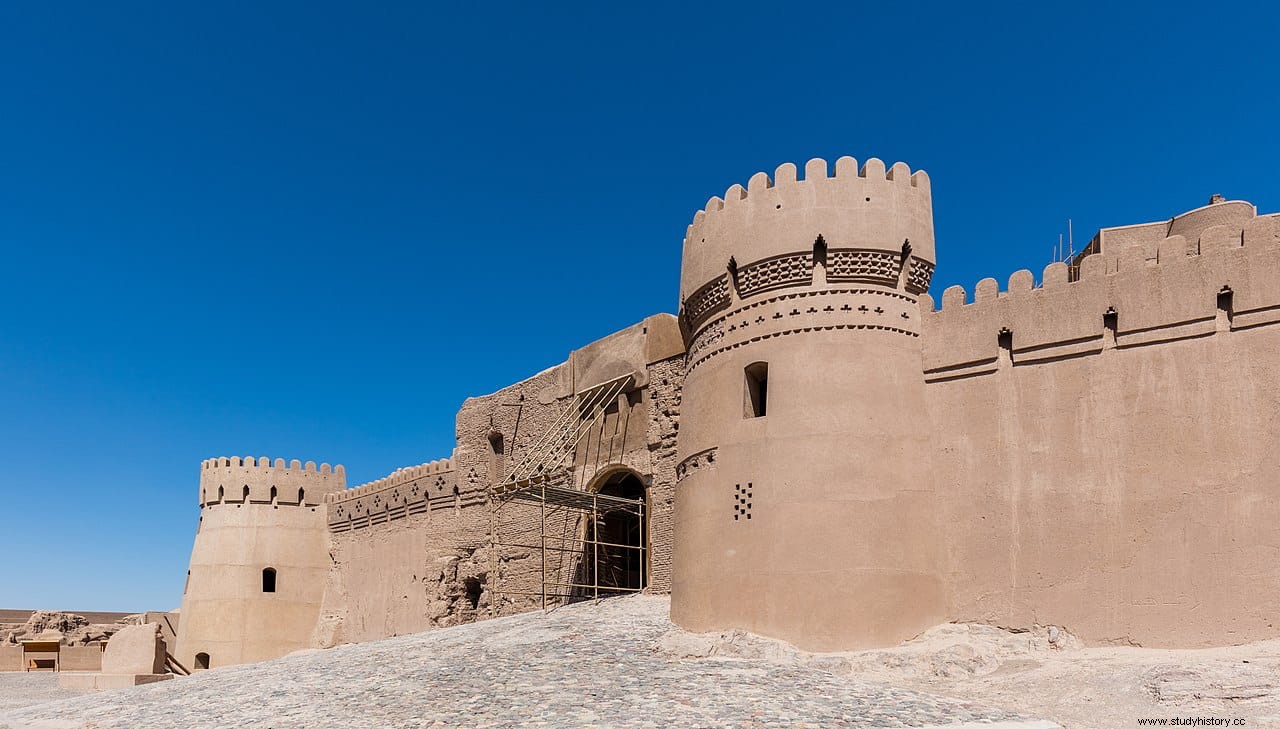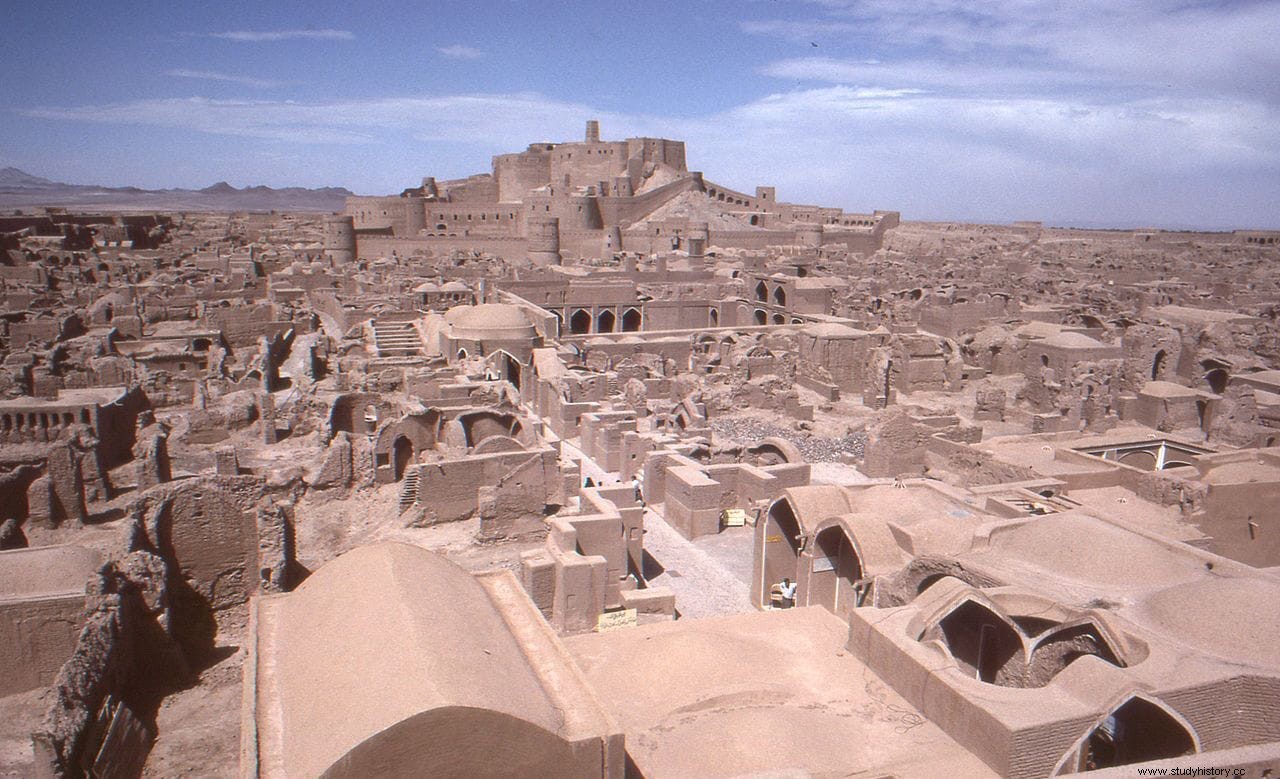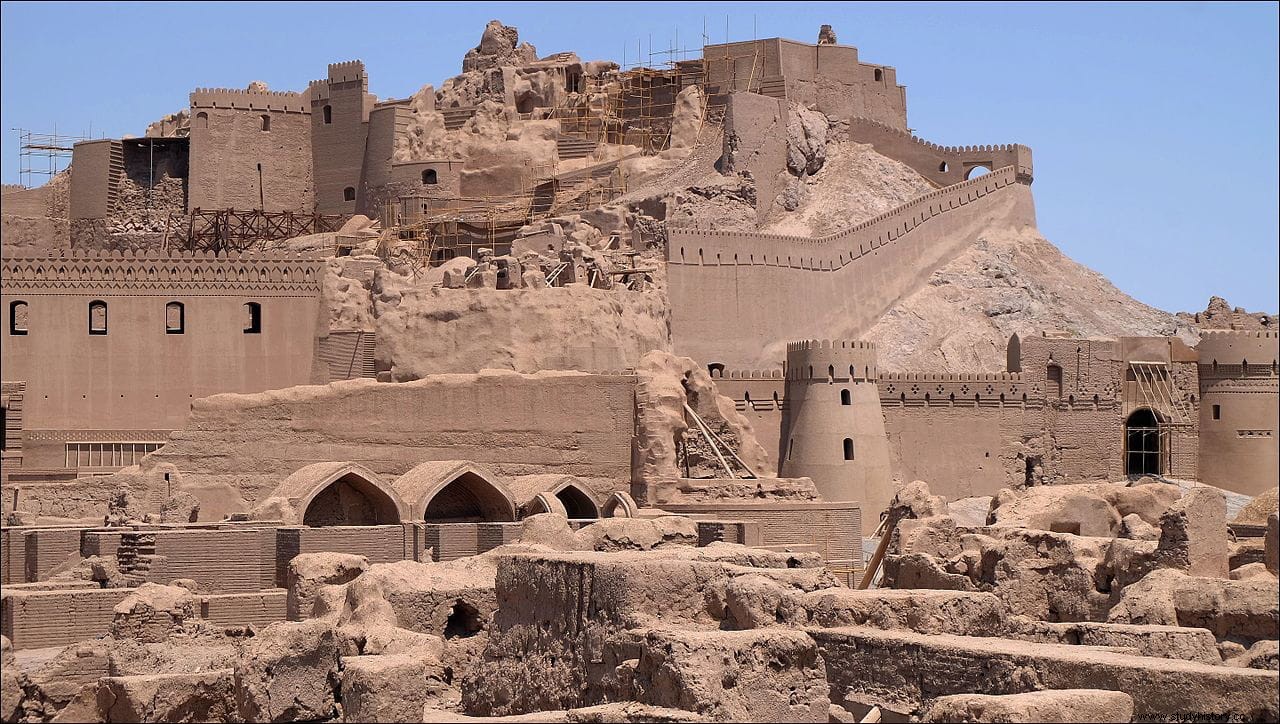Sometime between 579 and 323 B.C. During the Persian Achaemenid period, the citadel of Bam (in Persian Arg-é Bam) was built in the southeast of present-day Iran, a huge fortress made of mud that is considered to be the largest building in the world made of adobe.
It is located next to the city of the same name in the province of Kerman and near the border with Pakistan, and consists of a large fort containing an inner citadel (although today the entire complex is called a citadel).
The original Achaemenid nucleus was expanded by the Parthians and by the Sassanids, who between 224 and 637 AD. They built new fortifications and walls.

The Arabs conquered it in 645 and from the 10th century the name of Bam began to appear in Islamic sources, which speak of its impregnable fortress and its busy bazaars.
The fortress remained inhabited uninterruptedly until the construction of the new city of Bam began in 1900, and its inhabitants gradually moved to the new city. The citadel remained as a military garrison until 1932, when it was definitively abandoned.

The complex occupies an area of 180,000 square meters, surrounded by enormous and imposing walls up to 7 meters high that form a perimeter of 1,815 meters in length.
Behind the iconic fortress entrance, flanked by towers, some 400 houses and other public buildings and bazaars surround the central, higher area, where the citadel itself stands with the barracks and the Palace of the Four Seasons. .
Among the most characteristic and famous elements of the place are the 67 observation towers scattered throughout the complex, two of them in the citadel. All the buildings are built with an ancient technique that uses layers of mud (chineh), sun-dried mud bricks (khesht) and vaulted structures with domes, giving the whole the appearance of a huge sand castle.

The fortress, which only has one entrance gate, had the capacity to survive long sieges, since it had water wells, underground irrigation canals, gardens and farm fields and domestic livestock. Hence its fame of impregnability.
The buildings also had wind towers , structures of various sizes that allowed air to be redirected indoors, and even filtered by passing it through ponds, to cool it and remove dust.

On December 26, 2003, an earthquake destroyed almost 70 percent of Bam's structures, placing its epicenter about 7 kilometers below the citadel. With a 6.6 on the Richter scale and more than 20,000 dead, it was one of the worst suffered by Iran.
Interestingly, citadel structures that had been repeatedly modified and expanded over time were more damaged than older structures that had never been modified.
The reconstruction of the citadel of Bam began the following year, applying anti-seismic construction standards, and with the collaboration of several countries such as Japan, Italy and France. For this reason, most of the structures that we can see today are modern, although they almost exactly reproduce the old citadel.
